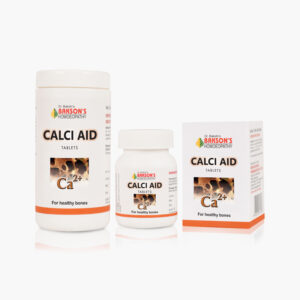What is Rickets?
Rickets is characterized by a defect in mineralization and the widening of the epiphyseal plates. Nutritional rickets is the most common cause of bone disease all over the world. Osteomalacia is basically a defect in the mineralization of the bone matrix occurring in adults. Rickets is seen commonly in children.
The prevalence of rickets is higher in developed countries. However, the prevalence has reduced in the developed countries significantly due to widespread introduction of dietary vitamin D supplementation.
Aetiology
Vitamin D deficiency is, by far, the most common cause of nutritional rickets. Other causes include genetic causes (Vitamin D-dependent rickets type I A (VDDR1A), Vitamin D-dependent rickets type I B (VDDR1B), Congenital hypophosphatemic rickets), drug induced rickets and rickets secondary to liver disease. Rickets can also be calcipenic, phosphopenic and due to inhibited mineralization.
- Calcipenic rickets: Deficiency of calcium results in calcipenic rickets, and vitamin D deficiency is the most common etiology for calcipenic rickets. It may result from inadequate dietary calcium intake.
- Phosphopenic rickets: It is caused by conditions that cause chronic low serum phosphate levels, either from impaired intestinal absorption or, more commonly, from increased renal loss.
- Inhibited mineralization rickets: It occurs when there is a defect in growth plate mineralization in the presence of normal calcium and phosphate concentration which may be due to several predisposing factors including, hereditary hypophosphatasia, medications (first-generation bisphosphonates), and toxicities from aluminum and fluoride.
Sign and symptoms
Rickets is frequently noted in children between 6 months to 2 years of life. The clinical manifestations of rickets are variable depending upon the underlying etiology, severity and the duration of the disease.
- Skull: Craniotabes, which softening of skull bone are seen in infants older than three months of age with frontal bossing, and wide fontanels.
- Chest: The classical sign is Ricketic rosary (due to widening of the costochondral junction) and pigeon chest.
- Extremities: The child presents with deformities of the weight bearing limbs. On walking, these are noticed in lower limbs mostly and include bow legs (genu varus), knock knees (genu valgum) and swelling of joints.
- Spinal deformities: Spinal column deformity and kyphosis.
Diagnosis
A detailed history and physical examination of the patient are important for the diagnosis of rickets. On clinical suspicion of rickets, biochemical test and radiological investigations is the next line of protocol.
The most important laboratory marker to diagnose the rickets is serum alkaline phosphatase (ALP) which is found in a high value in this disease (in calcipenic rickets up to or more than 2000 IU/L and in phosphopenic rickets 400-800 IU/L). It is a biomarker to monitor disease activity. Measurement of Serum 25-hydroxyvitamin D level is another investigation that helps in the diagnosis of rickets when it is due to deficiency of Vitamin D. The radiological images must include the distal ends of rapidly growing bones In upper and lower extremities.
General management
Treatment strategies of rickets depend on the underlying cause whether nutritional or genetic.
Warning: Above information provided is an overview of the disease, we strongly recommend a doctor’s consultation to prevent further advancement of disease and/or development of complications.
Disclaimer: The information provided herein on request, is not to be taken as a replacement for medical advice or diagnosis or treatment of any medical condition. DO NOT SELF MEDICATE. PLEASE CONSULT YOUR PHYSICIAN FOR PROPER DIAGNOSIS AND PRESCRIPTION.



 Login
Login






